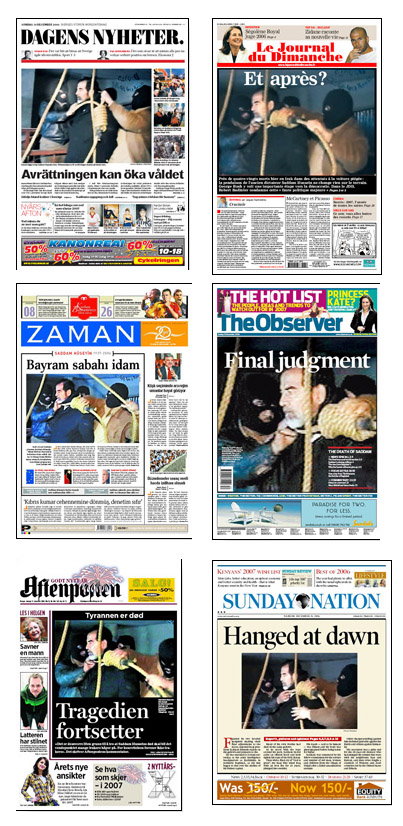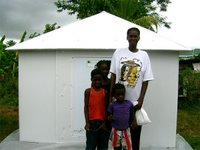 Halfway through installing a green roof on Wednesday night, May 2, Corrie Zoll stopped to take a slug from a bottle of Guinness. It wasn't that he was tired out. Just three minutes into the demonstration, he was illustrating for the near-sellout crowd at the Southern Theater how easy it is to install a green roof and how such technology can help the environment by cooling buildings through both shade and "evapotranspiration."
Halfway through installing a green roof on Wednesday night, May 2, Corrie Zoll stopped to take a slug from a bottle of Guinness. It wasn't that he was tired out. Just three minutes into the demonstration, he was illustrating for the near-sellout crowd at the Southern Theater how easy it is to install a green roof and how such technology can help the environment by cooling buildings through both shade and "evapotranspiration."Which is where the beer comes in.
Because plants move vapor from their roots and release it through their leaves, a green roof on a two-car garage can "sweat" five gallons of water on a hot day -- enough to fill 57 bottles of Ireland's finest.
Zoll and RoofBloom's Chris Wegsheid were among 13 groups presenting ideas at the first edition of Solutions Twin Cities, a networking event/show-and-tell session/progressive social, organized by Colin Kloecker, a blogger at Worldchanging Twin Cities who works at Cermak Rhoades Architects, and Troy Gallas, a member of Architecture for Humanity - Minnesota. Intended to showcase change-oriented projects in design, ecology, community development, and culture, Solutions takes its format from pecha kucha, a presentation format developed in Japan in which each each speaker gets 20 seconds to discuss each of 20 slides. As Worldchanging's Eric Larson aptly wrote, it's "no guff, no fluff, just the essence of the ideas."
While Zoll and Wegscheid fabricated a 3 x 4-foot section of roof, others used their time to discuss "future-positive creativity" ideas ranging from alternative currency systems and sustainable communities in Kenya and Uganda to Urban Earth, a new flower shop in southwest Minneapolis that's one of the country's only non-food-based co-operatives. For example:
• John Dwyer and Tom Westbrook of Studio 4284 presented student humanitarian architecture projects plus Shelter Architecture's Clean Hub, a shipping container that includes water purifying system, a compositing toilet and solar panels that can be dropped into slums or disaster zones after emergencies like Hurricane Katrina to provide clean water and sound shelter. • Jacqui Belleau and Christian Trifilio of product-design firm Worrell Inc. showed plans for a mobile film trailer they're designing for FilmAID International, an NGO that brings entertainment and educational films on STDs to residents of refugee camps in Africa.
• Jacqui Belleau and Christian Trifilio of product-design firm Worrell Inc. showed plans for a mobile film trailer they're designing for FilmAID International, an NGO that brings entertainment and educational films on STDs to residents of refugee camps in Africa.
• Cathy ten Broeke, Hennepin County's Coordinator on Homelessness, offered shocking local statistics -- 9200 people are homeless in Minnesota on any given night, one-third of them in Hennepin County, and 47 percent are children or young adults -- before outlining the goals of "Heading Home Hennepin," a plan that involves expanding housing assistance, access to housing, and day-and-night one-stop service delivery, from medical care to housing placement, to homeless and borderline families and individuals.
• Architecture for Humanity - Iowa members told of building an energy efficient bakery from straw bales and creating a recycling awareness campaign that hauled in thirty-five 50-pound bags of recyclables using a sculptural, floor-to-ceiling "sock" made of chicken wire and installed in a building on the Iowa State campus (the quirky project earned national attention from National Public Radio's SoundClips program).
• Scott Ervin of Alchemy Architects discussed his firm's acclaimed weeHouse prefab modernist homes and how designers, by utilizing techniques pioneered by car manufacturers and mobile home makers, can deliver on all three of the architect's pledges (of which, as the old saw goes, only two are usually on the table): Fast, Cheap, and Good. • Stephanie Kinnunen of NEED magazine unveiled the humanitarian magazine's second issue, which features stories about an all-women de-mining team in Cambodia, Minneapolis homeless advocate Mary Jo Copeland's Caring and Sharing Hands, and communities in Colombia that are banding together to kick out paramilitary groups that have contributed to a frightening statistic the country now claims: only Darfur has a larger population of internally displaced people.
• Stephanie Kinnunen of NEED magazine unveiled the humanitarian magazine's second issue, which features stories about an all-women de-mining team in Cambodia, Minneapolis homeless advocate Mary Jo Copeland's Caring and Sharing Hands, and communities in Colombia that are banding together to kick out paramilitary groups that have contributed to a frightening statistic the country now claims: only Darfur has a larger population of internally displaced people.
While the format took some getting used to -- the rapid-fire nature of the talks meant for rushed, sometimes jumbled presentations, and the technology wasn't without its glitches -- the energy of the 250 or more attendees was palpable. Cheers went out after each 6:40 talk, a few tears were spotted, and the din of excited conversation filled the theater afterwards, muffling the strains of the Cadillac Kolstad Band's music.
That energy — or, more accurately, sustaining it — was the spark behind Solutions. Gallas and Kloecker got their inspiration for the event in November after a book-launch party in Northeast Minneapolis for Worldchanging: A User's Guide to the 21st Century, which included a slide-show of some of the book's most interesting revelations about sustainable design, green memes, and activism. [Full disclosure: I'm a volunteer blogger for Worldchanging and offered advice as he and Gallas developed the Solutions program.] While Kloecker was excited to see "the breadth of what was going on" in the realms of humanitarian architecture and green design, he said he was disappointed that "afterwards there was sort of this fizzle. There was no infrastructure in place to let the connections made that night go on."
Judging from the near sell-out crowd and its enthused response Wednesday night, Kloecker and Gallas have created a successful model for connecting like minds and, going Worldchanging one better, they've created an online hub to keep the energy going between editions: a Solutions mailing list, website (where all 13 presentations will be saved as YouTube videos), blog, Flickr group, and mySpace and Facebook pages.


















